Among the cars entered in the 1964 Grand National Roadster Show was this group of hot rods from the East Bay Rods club, “one of the most active in the Oakland-San Francisco Bay Area,” said Hot Rod.
Grand National Roadster Show 1964
By Drew Hardin Photography COURTESY Petersen Publishing Company Archive
The recent Grand National Roadster Show in Pomona, California, marked 74 years since Al and Mary Slonaker staged the first National Roadster Show in January 1950. (The “Grand” in the title would come later.) That first show drew 100 cars and more than 27,000 spectators to the Exposition Building in Oakland, California, the show’s home until the mid-’60s when it moved into the brand-new Oakland Coliseum. We thought it would be interesting to turn the clock back 60 years and check in on the 16th GNRS and its “magnificent array of rod and custom creations, products of the hot-rod sport acclaimed among the most superb ever assembled for a single showing,” as Dick Wells described them in the May 1964 issue of Hot Rod magazine.
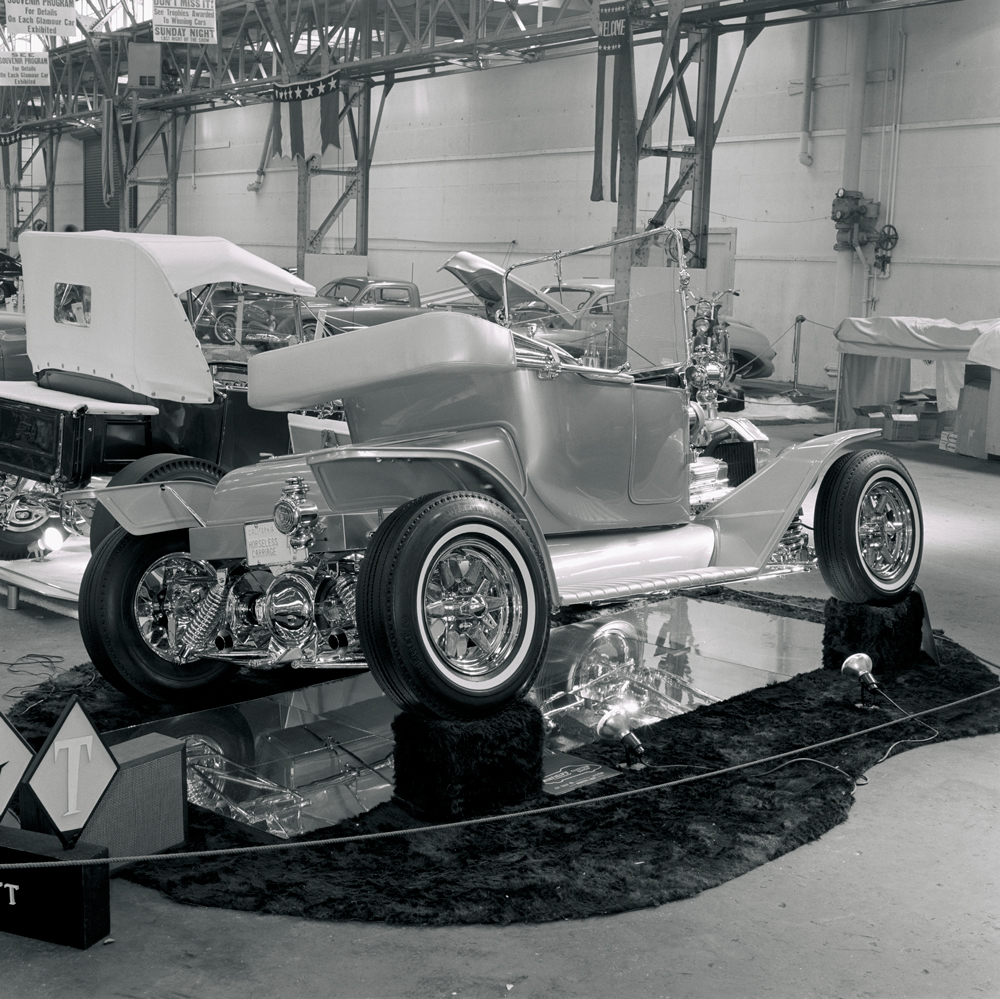
One of the hallmarks of the GNRS is the 9-ft.-tall perpetual trophy that has been awarded to America’s Most Beautiful Roadster (AMBR) since the show’s inception. Al Slonaker, quoted in an ad in the January 1950 Hot Rod, gave the trophy its name when he said it would go to “the most beautiful roadster displayed in the show.” From 1957 through 1971, the trophy was shared by the Most Beautiful Roadster and the Best Competition Car. So in 1964, three men posed with the trophy for Hot Rod Photographer Eric Rickman: Don Tognotti, whose King T was judged the Most Beautiful Roadster; and Bob Dorricott and Phil Sheehan for their Pontiac-powered AA/A Fiat that was named Best Competition Car.
Tognotti’s name may be familiar for several reasons. In the same year that he won the AMBR trophy, he opened the first of his Tognotti’s Auto World speed shops in Sacramento, California. Years later he also launched a promotions company, got involved in the running of the GNRS in the late ’80s, and became its owner for several years in the ’90s.
Likewise, his King T may look familiar to many, even if they weren’t in Oakland in 1964. That’s because it was the basis for the Hot Heap, one of the original “Sweet Sixteen” Hot Wheels cars introduced by Mattel in 1968.
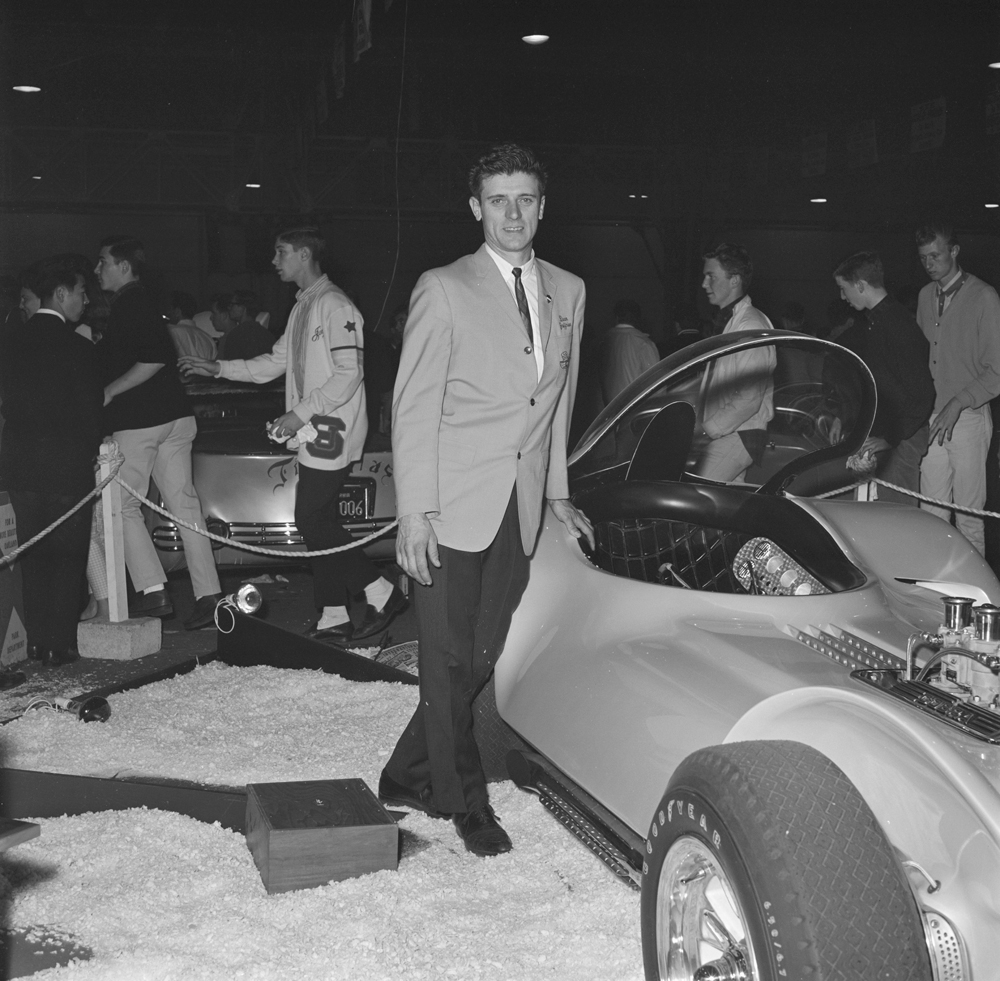
Tognotti spent two years building the King T out of a ’14 Model T roadster. The car sat on a boxed and chromed frame, to which was added a handmade
tubular dropped axle with Chevrolet coil springs for the front suspension. The rearend was a real eye-catcher, as it was a custom-built independent setup using a Chevrolet center section and cut-down truck axles for the half-shafts. The axle was located with polished steel upper and lower wishbones and sprung with coilover shocks. Airheart disc brakes were used front and rear, with the rear brakes mounted inboard. The powertrain consisted of an early Chevy small-block V8 and GM automatic transmission. Gene Winfield did much of the bodywork and applied the T’s lavender lacquer paint.
Despite winning the top award in Oakland, there was no photo of the King T in Hot Rod’s coverage of the ’64 GNRS. That may be because just a few weeks before, the car won the Best Rod award at the Custom Auto Fair held in conjunction with the ’64 Winternationals drag race, and it was pictured in the magazine’s coverage of that show. Even then, just the front of the car, showing its engine and front suspension, appeared in the magazine. It fell to sister publication Rod & Custom to produce a full feature on the car and put it on the cover of its June 1964 issue.
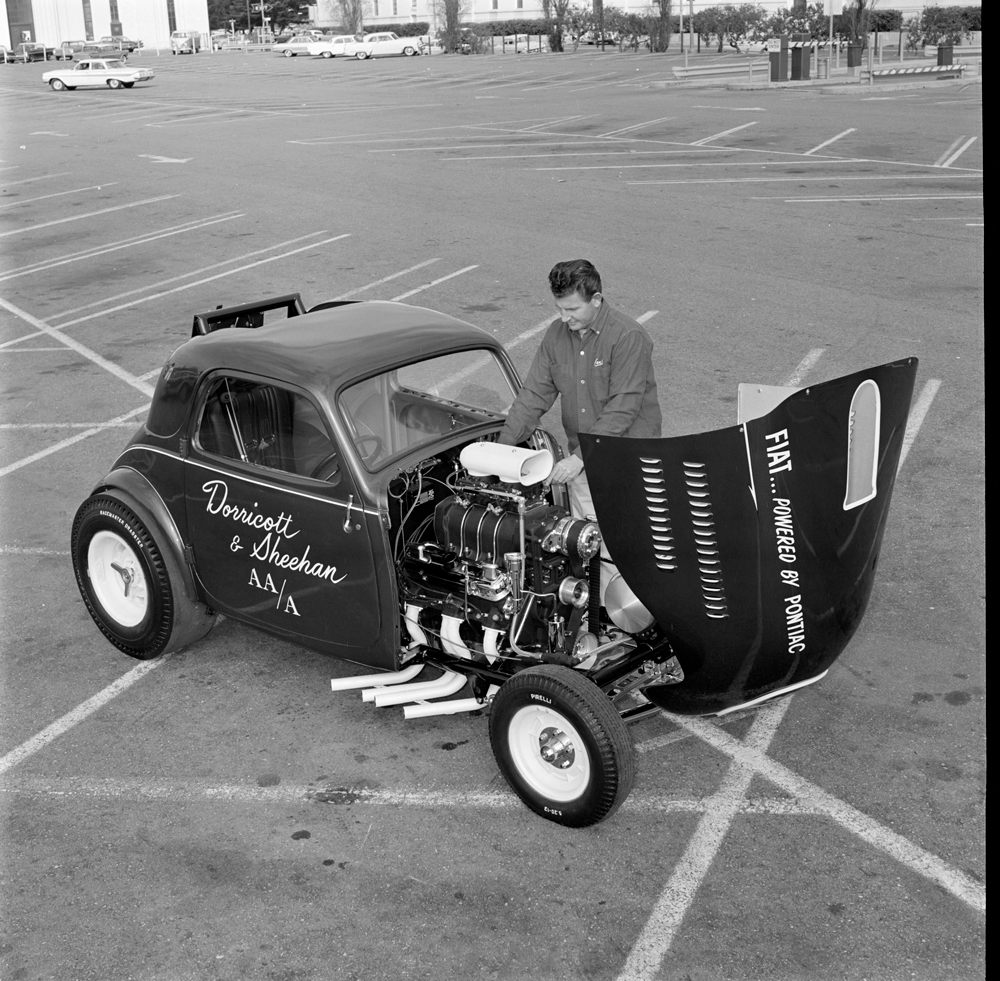
Rod & Custom also gave the Dorricott and Sheehan Fiat the cover story treatment in its October ’64 issue, though Hot Rod did publish a photo of the drag racer as it was displayed in Oakland in its GNRS coverage. The ’38 Fiat, named Red Runt, was powered by a blown Pontiac V8 equipped with a Winfield cam, M/T pistons, Iskenderian blower drive and a Joe Hunt Vertex magneto. The bright red bodywork—painted by Joe Bailon, the “Candy King”—was fitted on a chromoly tubular frame with a full belly pan. Peeking out from under the rear deck was a Halibrand quick-change rearend. Dorricott and Sheehan had been “building fine machinery for several years now,” said Rod & Custom’s editors, who called the Red Runt “impeccably detailed,” which was a “must” to win the Oakland
Roadster Show.
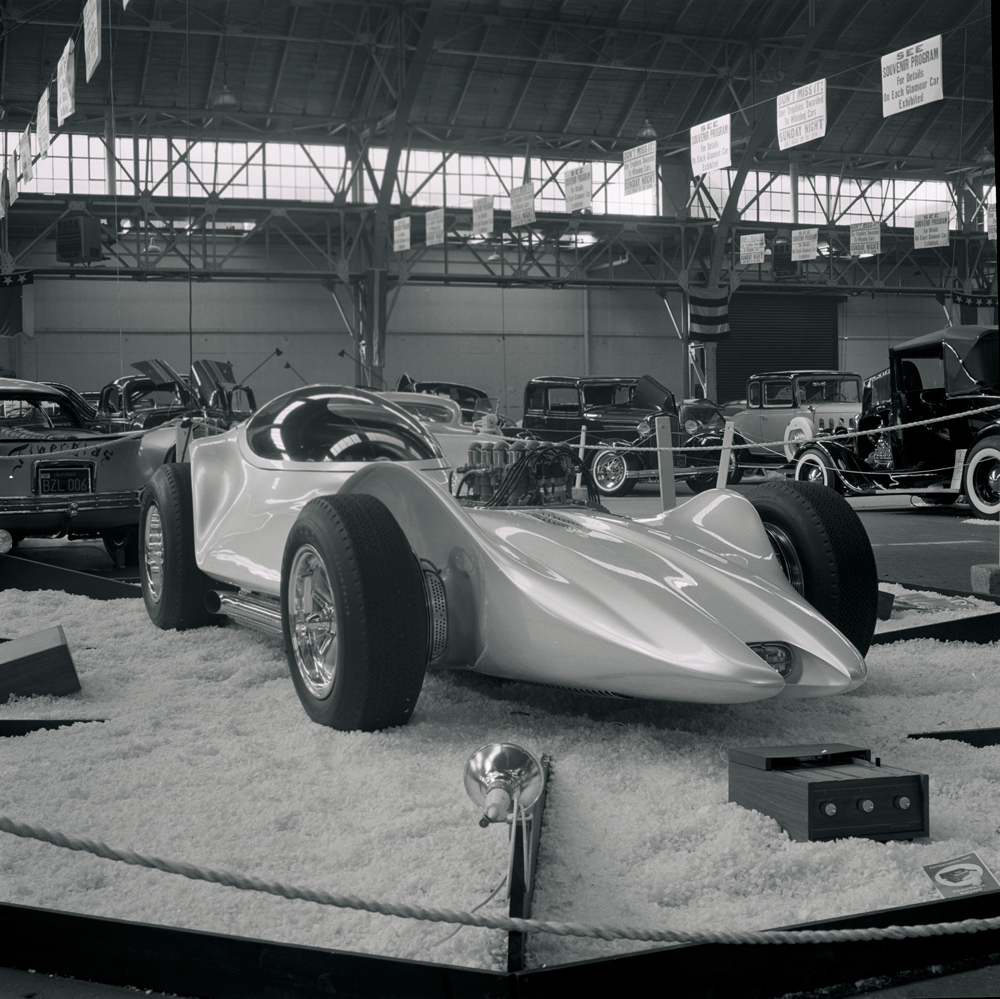
In addition to sharing the AMBR trophy with Tognotti, Dorricott and Sheehan were awarded a new engine from Ford, which had cars on display at the show as part of its Ford Custom Car Caravan program.
In these years, the GNRS also had a class for professional builders called the Tournament of Fame, and in 1964 the class champion was the asymmetrical, bubble-topped Mantaray built by Dean Jeffries. Jeffries had established a reputation as a painter and pinstriper for cars as diverse as Indy roadsters and James Dean’s “Little Bastard” Porsche, but the Mantaray moved him into the realm of custom-car builder. Its foundation was the chassis from a pre-war Maserati Grand Prix car onto which Jeffries built an aluminum skeletal frame that he then covered with aluminum body panels. The Mantaray’s powertrain consisted of a modified Ford 289 V8 and four-speed transmission from Carroll Shelby (a thank-you Shelby gave to Jeffries for painting the first Cobra). Jeffries remotely controlled the electrically operated cockpit canopy using the transmitter from a radio-controlled airplane.
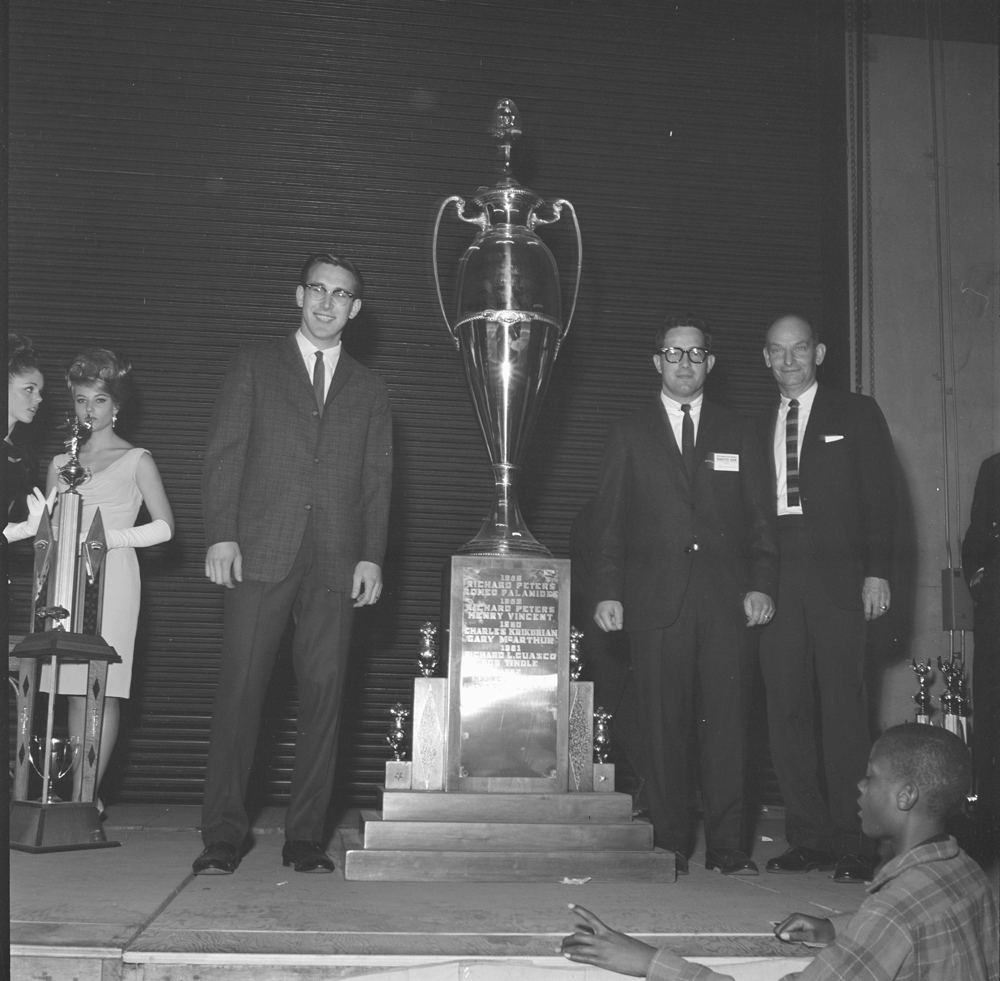
In winning the Tournament of Champions, Jeffries and his wife were given an all-expenses-paid trip to the Turin Auto Show in Italy, plus “visits to London, Paris, Rome and other outstanding European cities,” Wells wrote. He called the Mantaray “a product of genius, incorporating countless new design innovations which are functional, a feature too frequently overlooked in many of today’s ‘dream cars.’” Hot Rod’s editors were so taken with the Mantaray that it was that issue’s cover car and received a four-page feature in addition to its mention in the GNRS coverage.
Jeffries was also among the “nationally known automotive figures” who were inducted into the GNRS Hall of Fame in 1964. Those joining him
included car builder and auto journalist Spence Murray; drag racer and AMBR winner Richard Guasco; Bud Coons, who was a member of the NHRA’s mid-’50s Drag Safari; and Bob Tindle, best known for the Orange Crate drag-racing show car.





